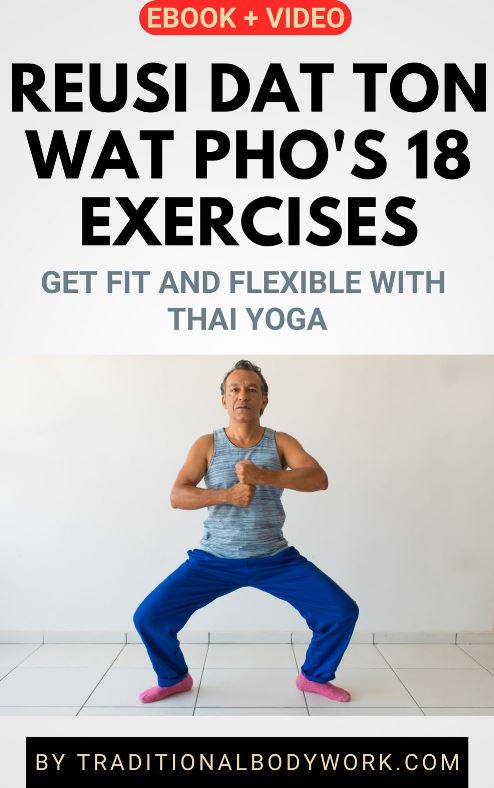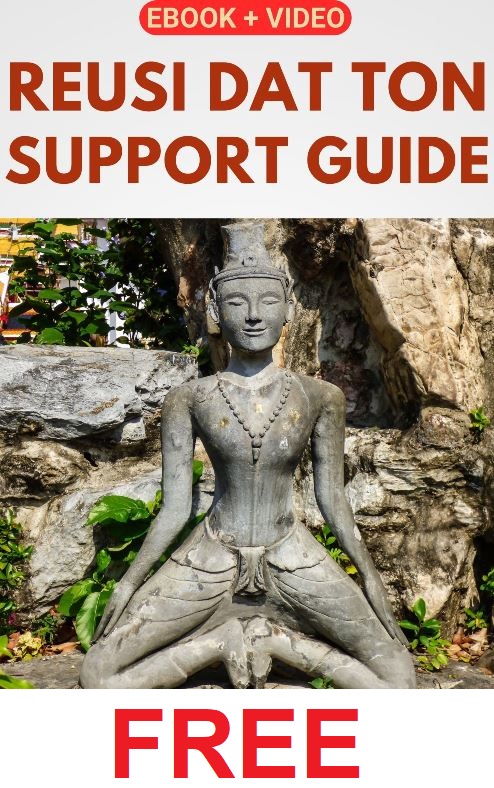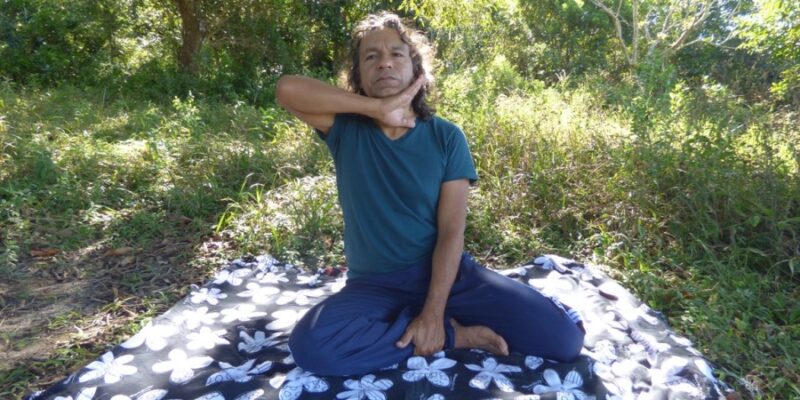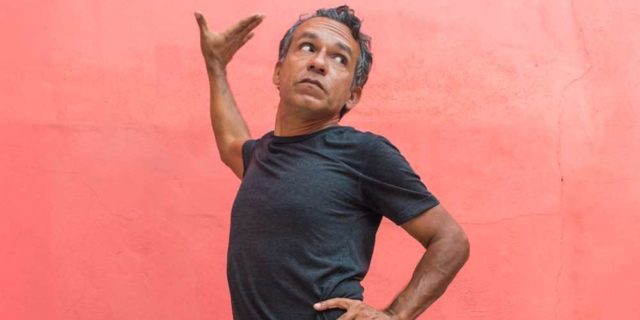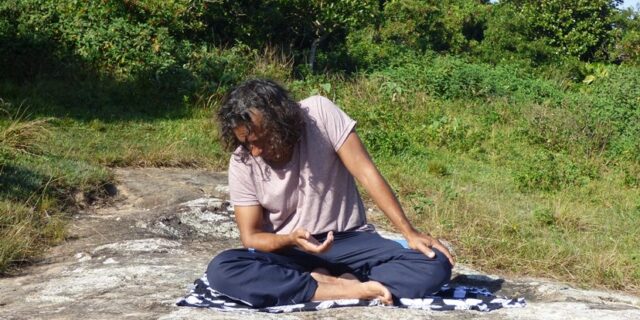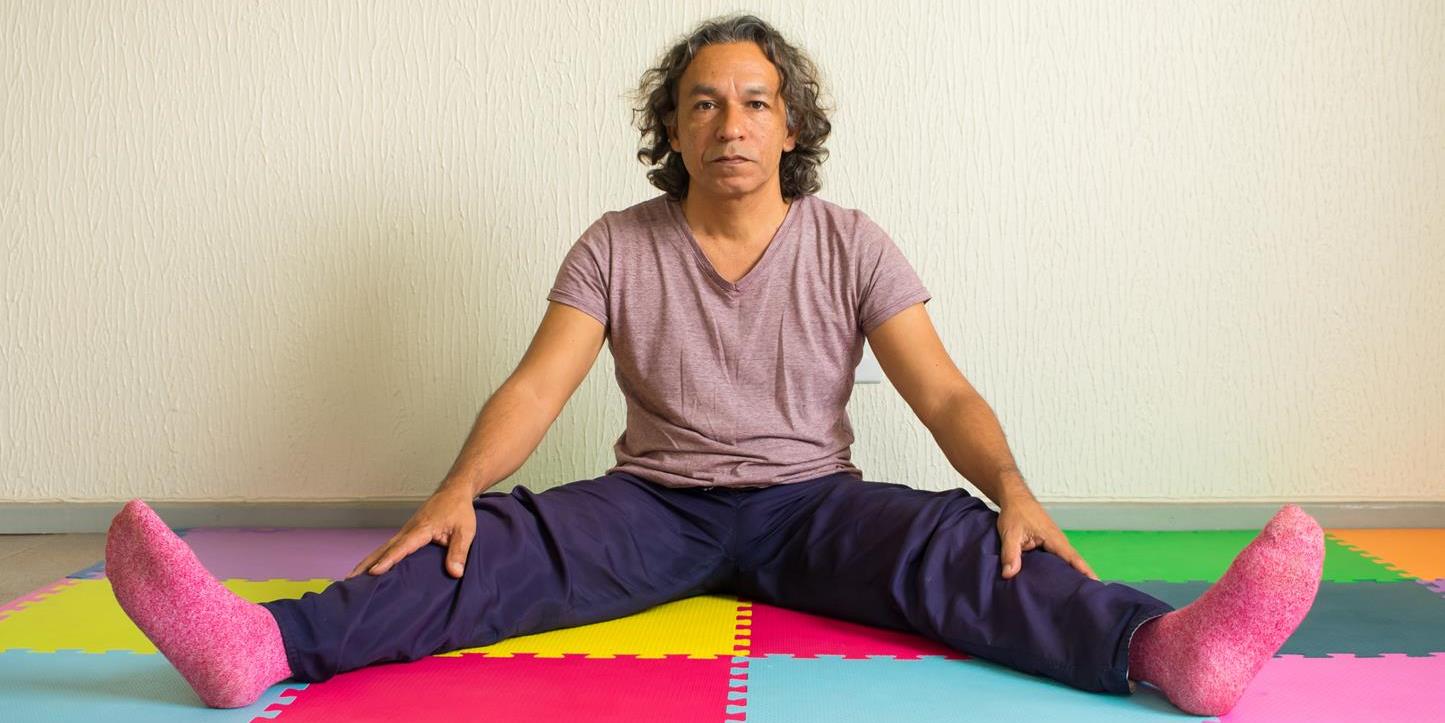
The Thai use a variety of ways of sitting on the floor while doing Thai Yoga Reusi Datton exercises or when giving Thai Massage, and each way of sitting has a different kind of impact on your body.
Moreover, when giving Thai Massage, the way of sitting is highly functional. For instance, when kneeling instead of sitting on the buttocks, one’s own body is on a higher level than the body of the client, which means one can reach other areas, use other massage techniques and can better take practitioner body-weight ergonomics into account.

Half kneeling positions in Thai Massage do even more: one rises further up being able to reach more, but it also means one does excellent exercises for oneself, like opening the hips, groin, stretching one’s own abdominal muscles, and such.

In any case, as for Thai Yoga Reusi Datton sitting exercises, I often do them kneeling with the buttocks on the heels (the top of the feet flat on the floor), if the exercise makes that possible, instead of sitting with the buttocks directly on the floor in Lotus or Half-Lotus position (legs crossed).
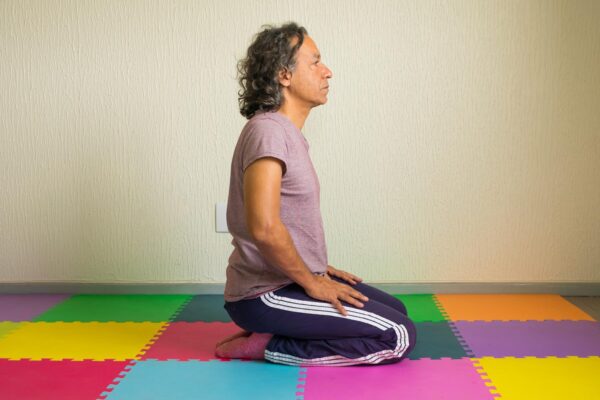
Kneeling, as explained above, has the advantage of the back being straighter (good for the spine) while stretching the ankles and the upper thighs (quadriceps). Moreover, depending on how far you point the knees outwards, you also open up the hips and groin.
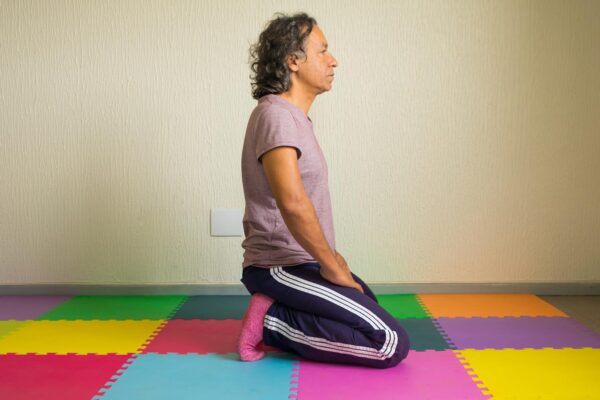
Another way of kneeling is kneeling on the heels like above, with the toes bend, leaning on the toes. This stretches the toes firmly. This kneeling position and the other mentioned in the previous paragraph are often used by Thai Buddhist monks in temples while meditating or chanting, and so on, but as already said, you will also see Thai Yoga practitioners and Thai Massage therapists using this as a working position.
Of course, some exercises can only be done sitting on the buttocks directly on the floor with the legs stretched in front of us, one leg stretches, or with the legs in crossed Lotus or Half-Lotus position. Lotus positions, by the way, open the hips and stretch the knees and ankles.
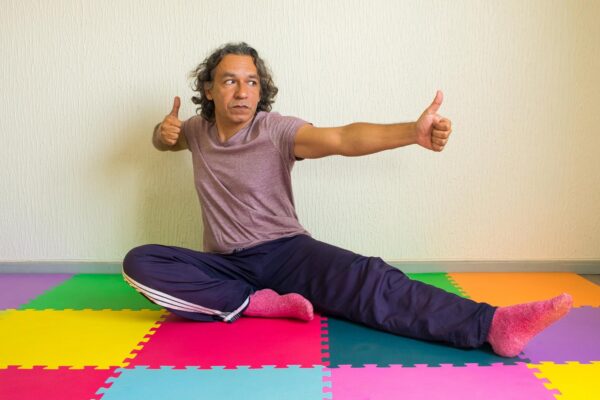
Then you have the “Thai mermaid pose” which means that both legs are bent to one side. There’s also the “Thai sit” or half-mermaid pose, where only one leg is positioned pointed to the back along the side and the other being bent in front of you like in the Half-Lotus position. These poses are often used when listening to someone or to a lecture or traditionally when eating, and sometimes also to do certain Reusi Datton exercises.
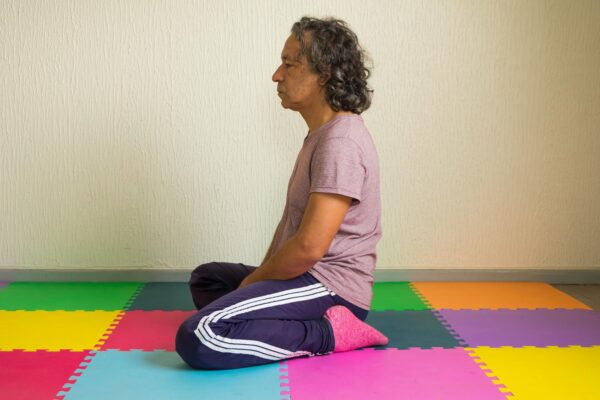
Additionally, there are the traditional squatting positions, that is, the position bent through the knees until the buttocks reach the floor. By the way, this is a position the Thais preferably use when visiting the toilet, but it’s simply a quite common sight in Thailand seeing people sitting like this.

There are also sitting positions where only one knee is up, also used in Reusi Datton, by the way, depending on the type of exercise. As for Reusi Datton, feel free to use the sitting style and position you feel best with, of course, if the Reusi Datton exercise allows the freedom to do so.




